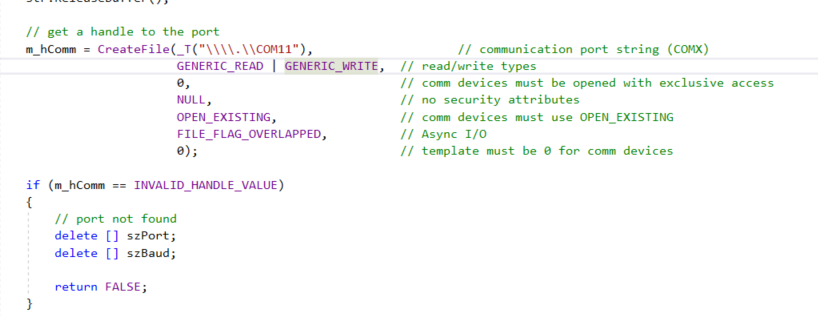数据结构——顺序双栈模板类实现
数据结构3.1.2
顺序栈中单栈和双栈(数组的两端分别为栈底)其实极为相似,道理上是一样的,实现的时候只需要多定义一套top标记和bottom标记即可,在判断栈FULL的时候,即是判断两个top是否相遇,这里我用两个元素的数组来定义两个栈顶标记,下面贴出代码(实现方式是多种多样的,如有不当,万望指正)^ _ ^
模板类代码:
#include <iostream>#include <cassert>using namespace std;template<class T>class DBstack {public:DBstack(int sz = 100); //构造函数/每个栈的起始容量是50~DBstack(); //析构函数bool Push(T & x, int d); //将x推入d代表的栈中,d = 0是1号栈否则为2号栈bool Pop(T & x, int d); //将d号栈顶元素弹出,其值返回在引用x当中,d = 0是1号栈否则为2号栈bool getTop(T & x, int d); //得到d号栈的栈顶元素,其值返回带x的引用当中(不弹出)bool isEmpty(int d)const; //判断d号栈是否为NULLbool isFull()const; //判断栈是否为满int getSize(int d)const; //返回d号栈当前元素的个数void makeEmpty(int d); //清空d号栈void output(int d)const; //输出d号栈的内容private:T *stack; //双栈数组int top[2]; //分别是两个栈的栈顶指针int bottom[2]; //两个栈的栈底指针void overflowProcess(); //栈的溢出处理};//函数定义template<class T>DBstack<T>::DBstack(int sz) {//构造函数stack = new T[sz]; //开辟双栈数组assert(stack != NULL); //中断处理top[0] = bottom[0] = -1;top[1] = bottom[1] = sz;}template<class T>DBstack<T>::~DBstack() {//析构函数,释放程序中的资源delete[] stack;}template<class T>bool DBstack<T>::Push(T & x, int d) {//将x推入d代表的栈中,d = 0是1号栈否则为2号栈if (top[0] + 1 == top[1]) { //再插入即两个top相遇return false; //栈满,存储失败}if (0 == d) {//推入1号栈stack[++top[0]] = x;}else {stack[--top[1]] = x;}return true;}template<class T>bool DBstack<T>::Pop(T & x, int d) {//将d号栈顶元素弹出,其值返回在引用x当中,d = 0是1号栈否则为2号栈if (isEmpty(d)) { //检查栈是否为NULLreturn false;}//执行弹出操作if (0 == d) {x = stack[top[0]--];}else {x = stack[top[1]++];}return true;}template<class T>bool DBstack<T>::getTop(T & x, int d) {//得到d号栈的栈顶元素,其值返回带x的引用当中(不弹出)if (0 == d) {x = stack[top[0]];return true;}else {x = stack[top[1]];return true;}return false;}template<class T>bool DBstack<T>::isEmpty(int d)const {//判断d号栈是否为NULLif (0 == d) {if (top[0] == bottom[0]) {return true;}}else {if (top[1] == bottom[1]) {return true;}}return false;}template<class T>bool DBstack<T>::isFull()const {//判断栈是否为FULLif (top[0] == top[1]) {return true;}return false;}template<class T>int DBstack<T>::getSize(int d) const {//返回d号栈当前元素的个数if (0 == d) {return top[0] + 1;}else {return 100 - top[1];}}template<class T>void DBstack<T>::makeEmpty(int d) {//set NULLif (0 == d) {top[0] = bottom[0];}else {top[1] = bottom[1];}}template<class T>void DBstack<T>::output(int d)const {//输出任意栈的全部元素if (0 == d) {//输出1号栈的全部元素for (int i = bottom[0] + 1; i <= top[0]; i ++) {cout << stack[i] << ' ';}}else {//输出2号栈的全部元素for (int j = bottom[1] - 1; j >= top[1]; j --) {cout << stack[j] << ' ';}}cout << endl;}
main测试代码:
int main(){//填充元素测试DBstack<int> doubl_stack; //创建一个双栈for (int i = 1; i <= 5; i ++) { //给0号栈填充上5个值doubl_stack.Push(i , 0);}for (int j = 1; j <= 7; j++) { //同上doubl_stack.Push(j, 1); //第二个参数非0即可}doubl_stack.output(0); //输出两个栈中的元素doubl_stack.output(1);//弹出元素测试int pop_1, pop_2, pop_3, pop_4;doubl_stack.Pop(pop_1, 0);doubl_stack.Pop(pop_2, 1);doubl_stack.Pop(pop_3, 1);doubl_stack.Pop(pop_4, 1);doubl_stack.output(0); //输出两个栈中的元素doubl_stack.output(1);//得到元素个数测试int add_1 = 100;doubl_stack.Push(add_1, 0);cout << doubl_stack.getSize(0) << endl;cout << doubl_stack.getSize(1) << endl;//set Empty测试int pop_5;doubl_stack.makeEmpty(0);doubl_stack.output(0);doubl_stack.output(1);doubl_stack.Pop(pop_5 ,0); //检测pop函数对Empty的处理是否正常system("pause");return 0;}
运行效果:



































还没有评论,来说两句吧...